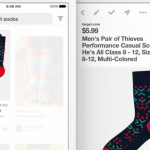
In the world of startup finance, a bridge round refers to efforts by young companies to raise a small amount of money to help them get to their next major round of financing. Bridge rounds usually occur when companies have fallen behind plan and missed a milestone.
These days I am seeing a very specific kind of bridge round becoming very common — so common, in fact, that it has almost become a specialty of mine and my co-investors. I am calling this the “gangway” round, after the bridge used to board a ship from the pier.
Gangway Round is a Special Kind of Bridge Investment
I define a “gangway round” as a bridge round that is designed to get young companies the money that they need to onboard customers who have committed to purchase their products, but who have not yet paid for them. This kind of round is increasingly common.
Founders of high growth potential start-ups often convince customers to buy their products and services, but need to make small modifications to their offerings before customers will use them or need to onboard the customers before the clients have paid.
Many inexperienced founders underestimate the time it takes to convince potential customers to adopt a product, the degree of modification that they need to make to their offerings before the customers will use them, the need to spend resources onboarding customers, or how slowly big businesses pay. As a result, the startups are faced with a dilemma: they have committed customers with signed contracts, but don’t have the money to bring on those committed buyers in a timely manner. They need to raise a very small bridge round to come up with the money to bring the customers on board and begin collecting sales revenues.
Over the past few months, at least two-thirds of the pitches I have seen from young companies have been for post-seed investment financing rounds of between $50,000 and $100,000 where the use of funds is to onboard committed customers — what I am calling gangway rounds. These are very attractive rounds for investors who make quick decisions.
Gangway rounds are usually done with convertible notes. This allows the founder to limit dilution. The convertible note will not trigger existing funding to convert at a low valuation later, just the new round. This means relatively little dilution to the founder. For example, a company that has already raised $500,000 at a $5 million valuation cap on a convertible note, might raise $50,000 at a $2 million valuation cap on a gangway round. When the company raises a Series A round in the future, only $50,000 converts at the investor-favorable cap — too small an amount to reduce the founders’ share of equity by much.
The use of a convertible note also allows the founder to present new investors with an attractive deal in return for solving their cash flow problem by acting quickly. The investors providing the small round get a much more attractive valuation cap than funding that was previously raised. Moreover, their risk is generally lower because the money is being used to solve a very specific cash flow problem — to get the customers’ payments in.
The gangway round can be done without irritating existing investors. By offering the same terms to current financiers first, founders can ensure that existing investors are on board. It’s hard to get angry at a founder for raising money from someone else at a more attractive valuation cap than you invested when you have turned down the opportunity to invest more money.
These days I seem to be doing nothing but talking to founders of startups with $150,000 or so in annual sales who need $50,000 or so to double their revenue by onboarding committed customers. In return for making a decision in a week and wiring money within two, my co-investors and I are getting valuation caps that are half of where they would ordinarily be. This could become an investment specialty.
Gangway Photo via Shutterstock
[“source-smallbiztrends”]




